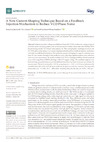Identificador persistente para citar o vincular este elemento:
https://accedacris.ulpgc.es/jspui/handle/10553/114053
| Título: | A New Current-Shaping Technique Based on a Feedback Injection Mechanism to Reduce VCO Phase Noise | Autores/as: | Del Pino Suarez, J. Khemchandani, Sunil Lalchand |
Clasificación UNESCO: | 3325 Tecnología de las telecomunicaciones | Palabras clave: | LC-VCO CMOS Phase noise Current-shaping 90 nm, et al. |
Fecha de publicación: | 2021 | Publicación seriada: | Sensors (Switzerland) | Resumen: | Inductor-capacitor voltage controlled oscillators (LC-VCOs) are the most common type of oscillator used in sensors systems, such as transceivers for wireless sensor networks (WSNs), VCO-based reading circuits, VCO-based radar sensors, etc. This work presents a technique to reduce the LC-VCOs phase noise using a new current-shaping method based on a feedback injection mechanism with only two additional transistors. This technique consists of keeping the negative resistance seen from LC tank constant throughout the oscillation cycle, achieving a significant phase noise reduction with a very low area increase. To test this method an LC-VCO was designed, fabricated and measured on a wafer using 90 nm CMOS technology with 1.2 V supply voltage. The oscillator outputs were buffered using source followers to provide additional isolation from load variations and to boost the output power. The tank was tuned to 1.8 GHz, comprising two 1.15 nH with 1.5 turns inductors with a quality factor (Q) of 14, a 3.27 pF metal-oxide-metal capacitor, and two varactors. The measured phase noise was −112 dBc/Hz at 1 MHz offset. Including the pads, the chip area is 750 × 850 µm2 . | URI: | https://accedacris.ulpgc.es/handle/10553/114053 | ISSN: | 1424-8220 | DOI: | 10.3390/s21196583 | Fuente: | Sensors (Switzerland) [ISSN 1424-8220], v. 21 (19), 6583, (Octubre 2021) |
| Colección: | Artículos |
Citas SCOPUSTM
4
actualizado el 08-jun-2025
Citas de WEB OF SCIENCETM
Citations
4
actualizado el 08-jun-2025
Visitas
108
actualizado el 10-ago-2024
Descargas
136
actualizado el 10-ago-2024
Google ScholarTM
Verifica
Altmetric
Comparte
Exporta metadatos
Los elementos en ULPGC accedaCRIS están protegidos por derechos de autor con todos los derechos reservados, a menos que se indique lo contrario.
